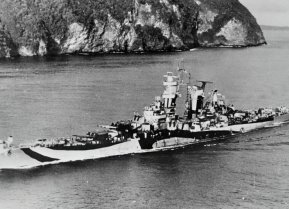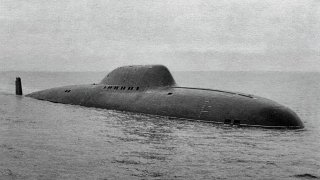Russia's Titanium Alfa-Class: A Submarine the U.S. Navy Couldn't Match
Russia's Alfa-class submarines, introduced during the Cold War, marked a significant advancement in naval technology with their speed, depth capabilities, and innovative use of titanium and a lead-bismuth cooled reactor.
Summary: The Soviet Union's Alfa-class submarines, introduced during the Cold War, marked a significant advancement in naval technology with their speed, depth capabilities, and innovative use of titanium and a lead-bismuth cooled reactor. Despite being a formidable threat that led NATO to develop countermeasures, the production of these vessels was limited to just seven due to the challenges of working with titanium, high costs, and technical difficulties, including a significant reactor problem with the lead boat. Although they never saw combat, the Alfa-class submarines remain a symbol of the technological arms race of the Cold War era.
The Alfa-Class Enigma: Soviet Titanium Submarines That Spooked NATO
When the Soviet’s Alfa-class submarines were introduced to service during the Cold War, they represented the fastest and deepest-diving ships of their kind.
In fact, North Atlantic Treaty Organization (NATO) countries widely feared what the USSR called its Project 705 Lira vessels since it was rumored that they were capable of evading Western torpedoes.
Unlike the Soviet’s previous submarines, the Alfa-class used a powerful lead-bismuth cooled reactor as a power source and was constructed with titanium.
The pros of Russia's titanium submarines
Titanium is more durable than steel and weighs less, making it the ideal material for submarine construction.
Submarines made with titanium like the Alfa can sail faster than U.S. Navy and NATO subs with more agility and resistance to damage, enabling them to dive to greater depths while reducing emissions of radiated noise.
The incorporation of the lead-bismuth cooled reactor is also a huge asset for the class.
With this power source, the Alfa-class displaced 2,300 tons surfaced/3,200 tons submerged and measured at just 267 feet in length with a beam length of 31 feet.
The history of Project 705 Lira
The Soviet’s Project 705 was first conceptualized in the late 1950s to fulfill requirements for a submarine class able to outpace competitors underwater. Additionally, Soviet engineers worked to create a ship able to avoid anti-submarine weapons and sail freely without being detected. By the mid-1960s, production of the Alfa-class commenced at the Admiralty yard, Leningrad and at Sevmashpredpriyatiye, Severodvinsk.
In 1968, the first Alfa-class submarine, K-64, was laid down, followed by K-123, K-316,K-432, K-373, K-493 and K-463.
While the Project 705 submarines were viewed as very successful, the Soviets ended up producing just seven as titanium proved to be a very difficult metal to work with.
As detailed by Peter Suciu, “To successfully weld huge titanium panels on a large scale, Soviet engineers had to first create enormous warehouses that were hermetically sealed and then filled with argon, an inert gas that would not interfere with the welding process. Welders had to wear a large cosmonaut-like suit that would supply them with oxygen while inside these warehouses.”
Other issues surrounding the submarines included their hefty cost and loud noise levels. Just one year after the lead boat in the class K-64 entered service with the Soviet Navy, she suffered a major reactor problem and had to be towed back to dry dock. Ultimately, this Alfa-class submarine was considered too expensive to repair and used instead as a training vessel.
Alfa-Class: Were these submarines indeed a threat to NATO countries?
Throughout their years in service, no Alfa-class submarine ever saw combat.
However, the class’ reputation certainly instilled fear in NATO countries. In response to the submarines, the British Royal Navy initiated its Spearfish torpedo program and the U.S. established its ADCAP program, both intended to create torpedoes with greater range and speed so that they could better counter Alfa-class ships.
By the mid-1990s, all seven Alfa-class submarines were decommissioned.
About the Author: Maya Carlin
Maya Carlin, National Security Writer with The National Interest, is an analyst with the Center for Security Policy and a former Anna Sobol Levy Fellow at IDC Herzliya in Israel. She has by-lines in many publications, including The National Interest, Jerusalem Post, and Times of Israel. You can follow her on Twitter: @MayaCarlin.
Image Credit: Creative Commons.


